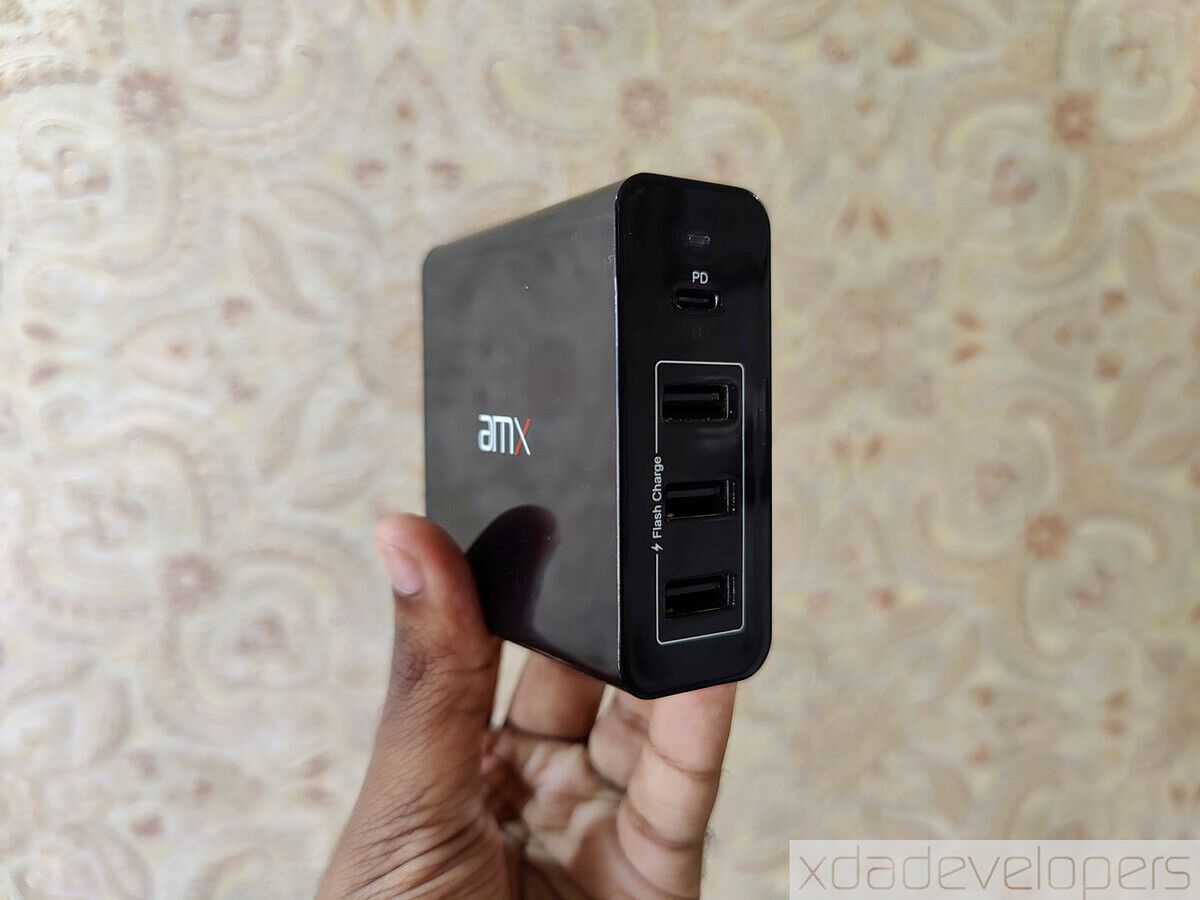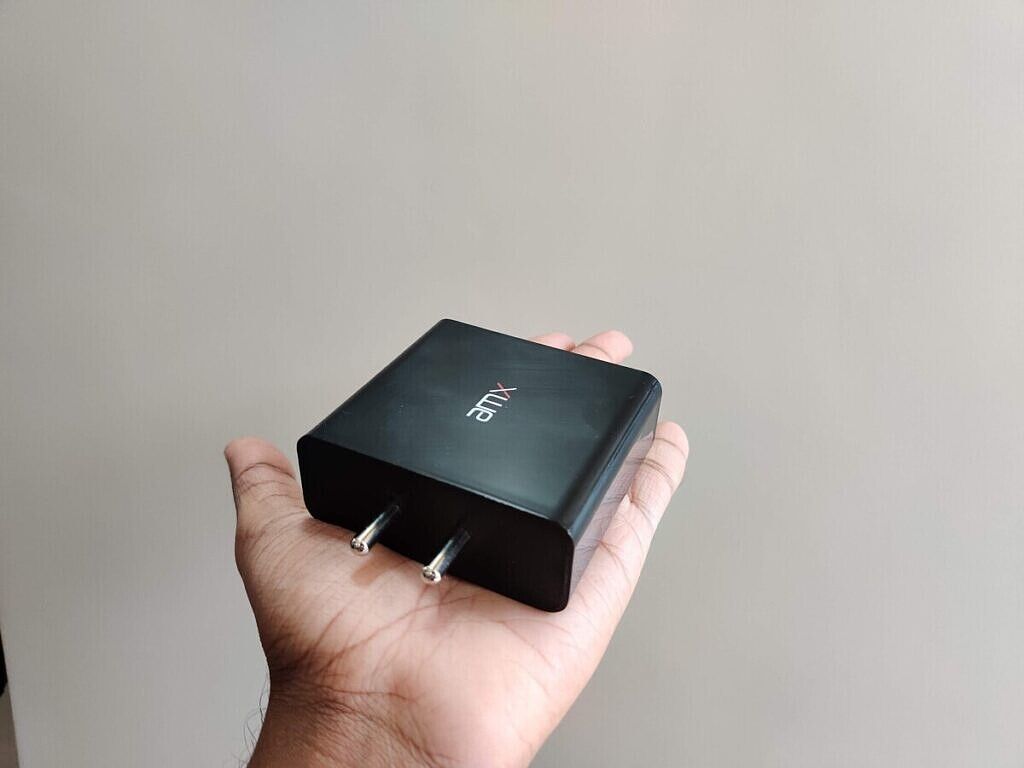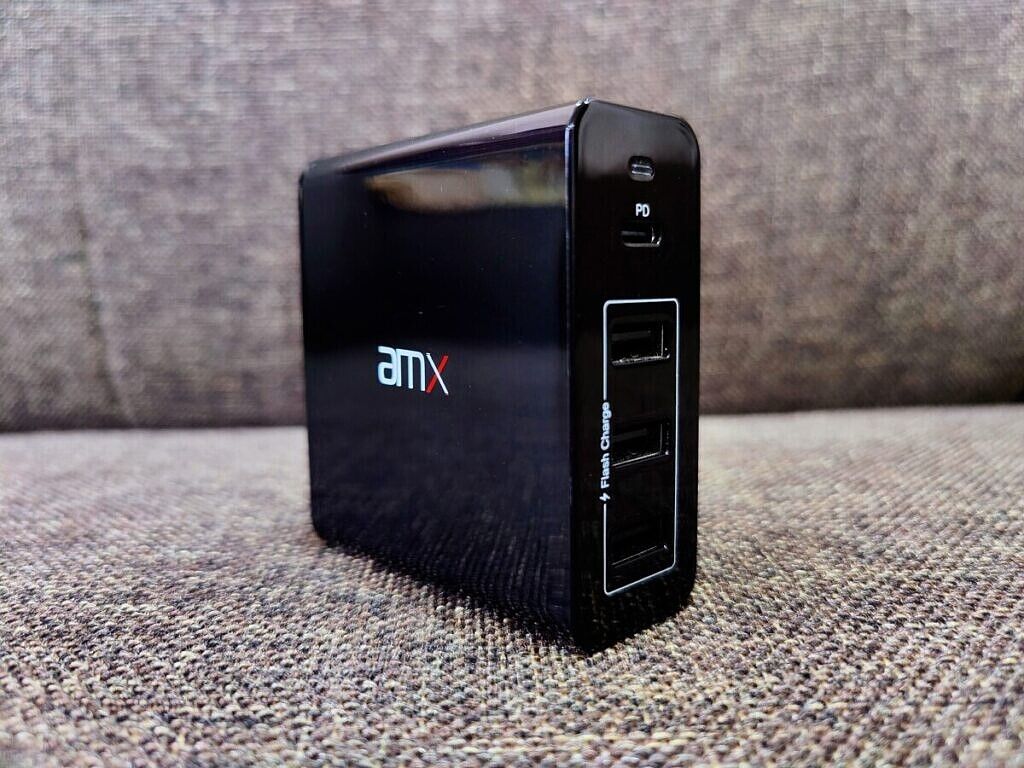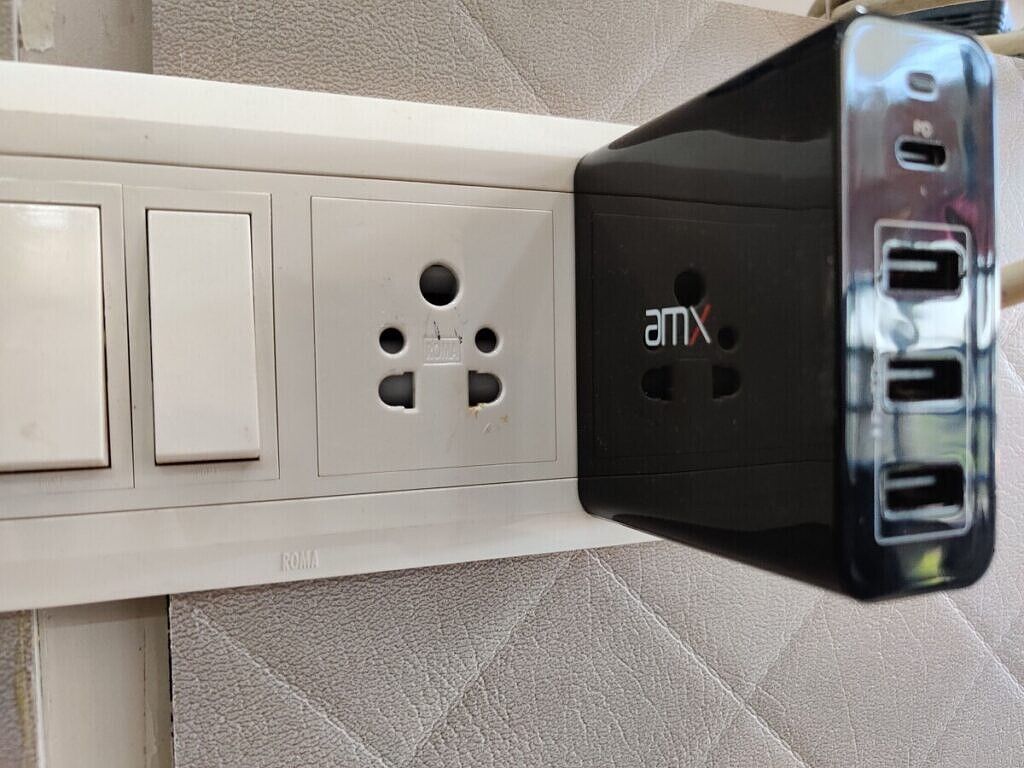By now, most of us have accumulated a fair few gadgets and accessories that need charging at least once every few days. If you share a living space with other people, then you have also likely run into the same problems that I have—there just aren't enough charging sockets at home for everyone. What follows is either a carefully orchestrated charging plan for your many devices or an investment into a few multi-pin plugs and adapters. A more compact solution is a multi-port charging brick, and the AMX XP60 PD charger did just the trick, well enough for me to write a review on it.
About this review: AMX sent me the XP60 PD charger back in March 2020 for a quick review on my personal Twitter. I separately purchased their USB-C to USB-C 3.1 Gen 2 cable for personal use. This review is after more than four months of regular use of the charger and cable. AMX did not have any inputs on this review.
Back in March 2020 when I spotted AMX's XP60 PD charger, I realized that it would solve some of my charging woes. My computer desk has very limited space and access to only a single charging socket in the vicinity. So I was usually juggling between chargers and cables in an attempt to keep multiple smartphones, accessories, and my laptop (Dell XPS 13 2in1 2019 - 7390) charged through the days and weeks. The situation was further complicated when you take into account the fact that my primary smartphone at the time, the OnePlus 7 Pro, worked best with a proprietary charger, while other smartphones would work better with other chargers. Some accessories, like my Logitech MX Master 2S, require a micro USB cable, while others like the Amazfit GTR 47mm smartwatch and the Mi Band 4 require their own proprietary cables. At any point in time, I need to charge my laptop, my smartphone(s), my earbuds (either the Sony WF-1000XM3 or the Galaxy Buds+), and possibly a smartwatch (though these last longer and hence are charged infrequently). I was also on the lookout for a solution that I could carry around in my bag and thus cut down on the need to carry multiple charging bricks for my phone and laptop. Airports and coffee shops aren't very generous with charging sockets (though by fate, neither are frequented by me anymore), so a multi-pin charging brick was what I really needed to sort out this mess.
The AMX XP60 PD perfectly delivered on my needs, at least from a functional perspective.
AMX XP60 PD: Design
The design on the charging brick could use improvement—the charging brick is best described as "chunky", but that is to be expected at least where the ports are placed. The charger comes with one USB Type-C port and three USB Type-A ports, so you have a fair bit of versatility on what devices you can charge simultaneously.
The charger does not come with any included cable, so you can either use any of your existing cables or purchase them separately. There is an LED present above the USB Type-C port, and it glows blue when the charger is receiving current.
The Xiaomi Mi 18W Fast Charging Adapter (affiliate link) is dwarfed in comparison, while the chunky OnePlus Warp Charge 30 charger comes close in bulkiness.
The real flaw in the design is near the charging pin. Because of its long blocky design, the charger ends up blocking nearby buttons, especially if you use a 3-pin (type-D) charging socket that is widely used in India. AMX perhaps recognized this design flaw later, so their packaging included an extension pin that alleviates some of this obstruction. But in the same breath, it also causes the charger to droop down because of its 150g weight. The charging pin itself isn't too robust, either. Hopefully, the charger design can be improved for future products.
If you have a 2-pin charging socket placed vertically, then you should be able to use the charger without needing an extension pin, unless you have any other blocking elements nearby.
AMX XP60 PD: Charging
Where the AMX XP60 PD excels at is charging a lot of things at once. The lone USB-C port is capable of 45W output (5V/3A; 9V/3A; 12V/3A; 15V/3A; 20V/2.25A) and is USB Power Delivery PPS 3.0 compatible. Because of this, it supports 45W Super Fast Charging on the latest Samsung Galaxy flagships. This is also perfect for charging my laptop through the USB-C port and the output specifications on the charger match the stock AC Adapter that came with my laptop. I've since relegated the stock adapter back to the box and only used the AMX XP60 PD as it leaves me room to charge other devices as well.
There are three USB Type-A ports, capable of a maximum of 12W (5V/2.4A) output on each port. Sadly, these aren't Qualcomm Quick Charge certified. The charger also has a maximum output cap of 62W (contrary to the number in the marketing name), so you cannot exceed this ceiling on this product. So if you have all the ports occupied on the charger, the maximum theoretical power you can draw out is 45W from the USB-C port and 17W combined from the three USB-A ports. At first sight, this may feel inadequate, and it will be if you need to fast charge all your devices all the time. But if you have slower charging accessories around, this should not be as much of an issue. For my smartphone, I alternate between using USB PD through the Type-C port when I need a quick boost or let it charge slower over a few hours.
Thermal performance on the charger has been satisfactory too. The charger gets warm to the touch when you max it out for an hour or so, but it does not get unreasonably hot, remaining well within acceptable levels of performance. The charger also claims to be BIS certified.
Pricing and Availability
The AMX XP60 PD charger was available in India for ₹1,599 (~$22) back in March 2020 on the AMX website, but currently, the product is out of stock. The website mentions that the charger will be back in stock in mid-August, though the listed price is ₹1,699 (~$23), likely to account for recent currency fluctuations and tax changes.
The AMX XP60 PD charger in my usage thus has the AMX USB-C to USB-C 3.1 Gen 2 cable on the first port, usually connected to my laptop and sometimes to my new smartphone, the OnePlus 8 Pro. Two of the three USB-A ports are connected with USB-C cables for slowly charging my primary smartphone and audio accessories. The last port usually is free most of the time, but I have the flexibility to connect a micro USB cable for charging my mouse or the proprietary cable for my watches. When regular traveling does resume, this will be the only charging brick I will take along in my bag.
Overall, I'm happy with this charger, while still recognizing that it isn't perfect. Unlike other parts of the world, finding a safe, high-output, multi-port charger with USB PD in India is a bit of a challenge by itself, and so there aren't as many solutions available in this space. I would recommend this for people who want multi-port chargers with USB PD in India. As long as you know what to expect out of the charger, you should be happy with the price. If you are looking for something more compact and portable, or something even more powerful, you should keep your eye out on GaN chargers (though they will take some more time to arrive in India and are expected to be more expensive initially).




